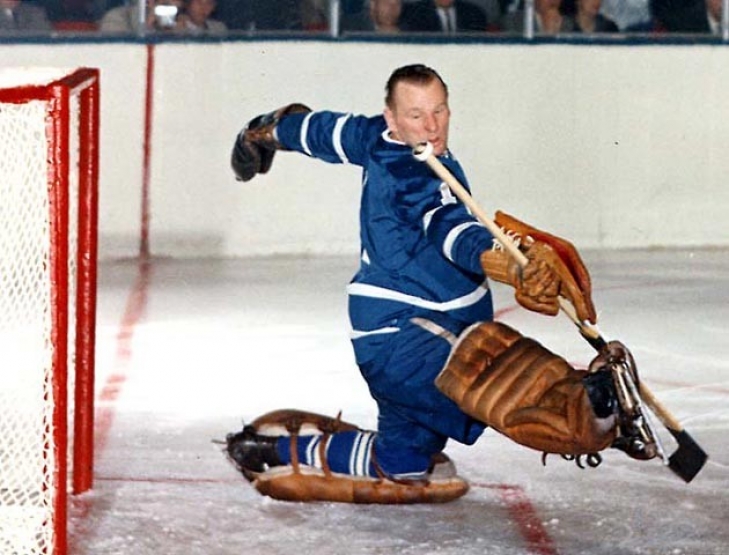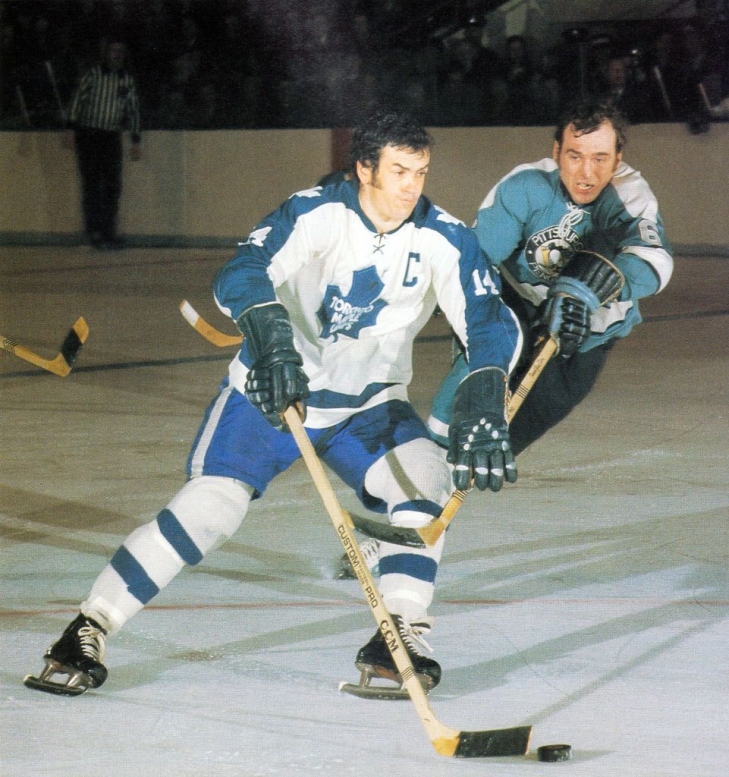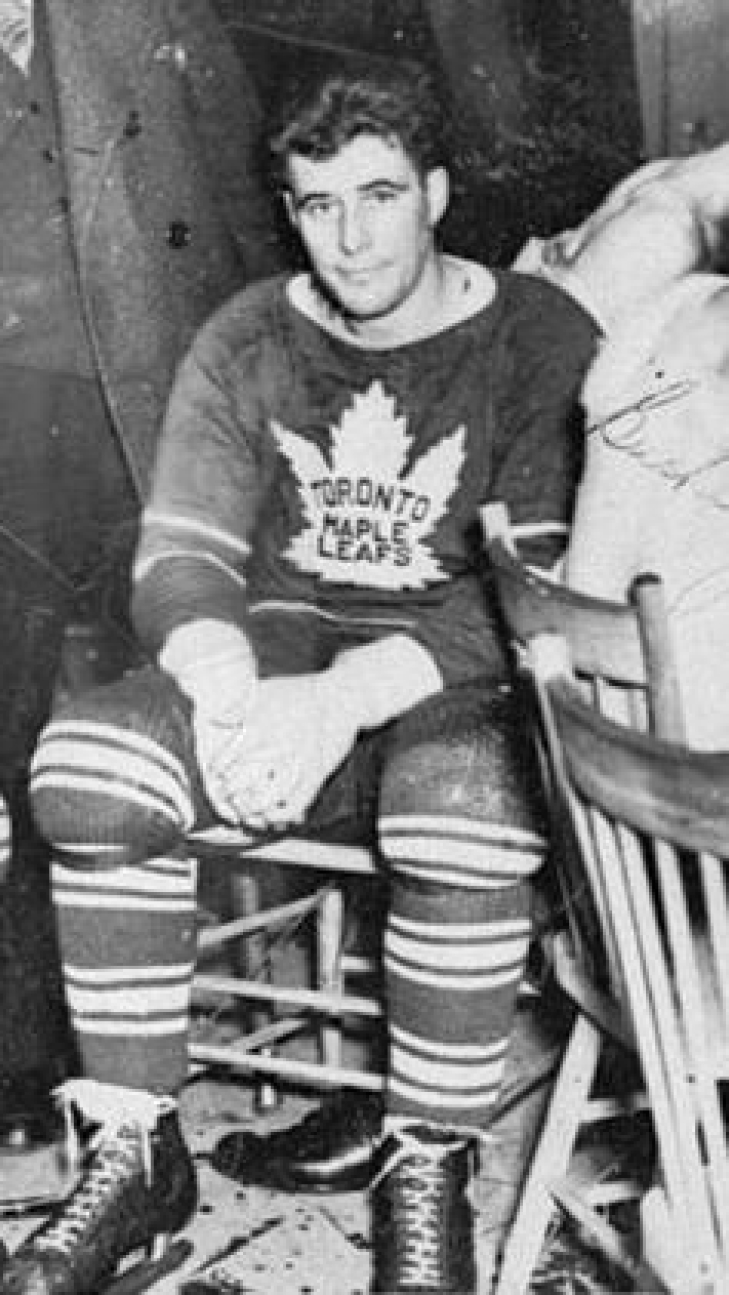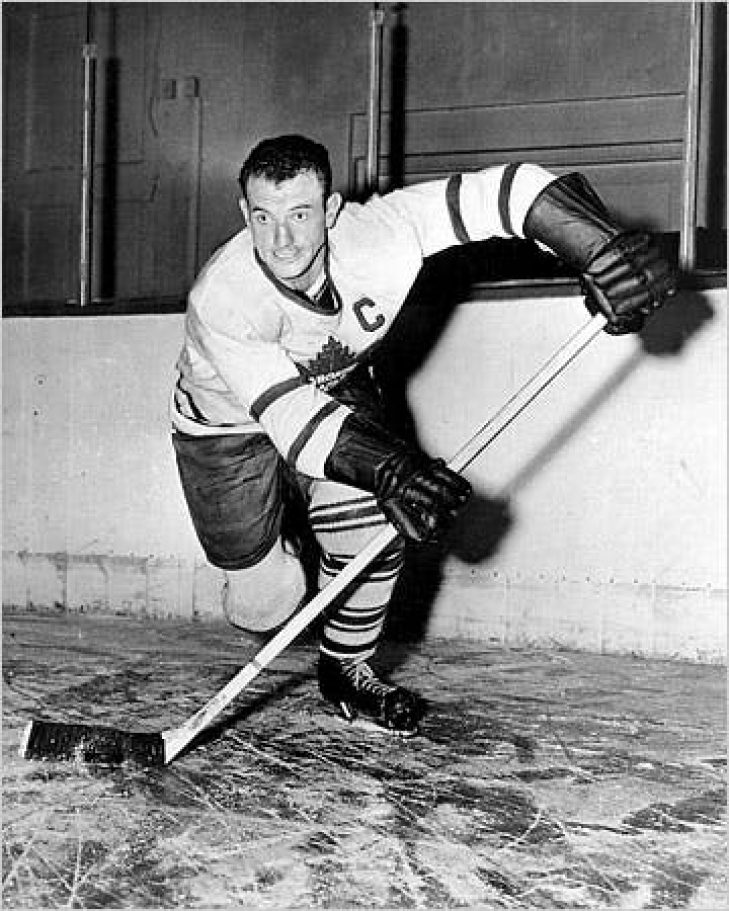
Committee Chairman
13. Johnny Bower
A product of rural Saskatchewan, Johnny Bower first made the NHL with the New York Rangers at age 29, where he played every minute in his rookie year (1953-54). The Goalie lost his job to Gump Worsley, and he would be relegated to the minors until the Maple Leafs took him from Cleveland of the AHL in 1958. At age 34, he was about to put forth an unexpected Hall of Fame run.
Bower remained with the Maple Leafs into his mid-40s, and he was not there to ride the pine but to provide the netminding necessary to bring Toronto to playoff dominance. In the 1960-61 Season, Bower won the Vezina Trophy, was a First Team All-Star, and backstopped the Leafs to three straight Stanley Cup wins. He followed it up with a second Vezina in 1965.
After his second Vezina, Bower’s eyesight began to fail, yet his grit kept him in the NHL. Bower, who was fearless, even in his era, helped the Leafs win another Cup in 1967, though fellow veteran, Terry Sawchuk, was the primary Goalie. He played until 45 and had 219 Wins with Toronto.
Bower was inducted into the Hockey Hall of Fame in 1976. In 1995, his name was hung to the rafters of the Air Canada Center, and his #1 (shared with Turk Broda) was retired by the franchise.
12. Dave Keon
Dave Keon made an immediate impact in the National Hockey League, making the Toronto Maple Leafs straight out of junior. Keon scored 45 Points, winning the Calder Trophy, and his solid two-way play made him an instant celebrity in Toronto.
The Center had an effortless backhand and a booming shot. As good as his offense was, Keon was one of the best offensive defensemen of the 1960s and a demon on the penalty kill. A two-time Second Team All-Star, Keon twice led the NHL in Short-Handed Goals (1968-69 & 1970-71) and had 31 in total with the Leafs. Incredibly, that number is not as impressive as the 75 total Penalty Minutes in the 1,062 Games he played in Toronto.
Keon won the Lady Byng Trophy as the NHL’s most gentlemanly player twice (1962 & 1963) and was in the top four in voting seven other times. The Maple Leafs won four Stanley Cups in the 1960s, with Keon playing a vital role in all of these wins, peaking with a Conn Smythe Trophy in the 1967 win.
In the 1970s, Keon feuded with Toronto owner Harold Ballard, who held his rights after his contract expired in 1975. Since Ballard set unreasonable terms for compensation, Keon had to continue his career in the WHA. It would be decades before he would ever reenter the Leafs fold in any capacity.
Keon was chosen for the Hockey Hall of Fame in 1986. Keon would not accept having his name honored by the team, but his number 14 was retired by the team in 2016.
11. Busher Jackson
When you are in the Hockey Hall of Fame, it is hard to call you underrated, but in the lore of the Toronto Maple Leafs, Harvey “Busher” Jackson does not nearly receive the due he is deserved.
Jackson was the top Left Wing in hockey, where he starred on the “Kid Line” along with Charlie Conacher and Joe Primeau. Leading Toronto to a Stanley Cup in 1933, Jackson was four-time First Team All-Star, who finished in the top-six in Goals five times. Jackson would lead the NHL in Points in 1931-32 and was the runner-up the year after.
Jackson was known for a blistering backhand, and at times, a cocky attitude. It did not always serve him well, but he backed it up on the ice. After his play slipped, he was traded to the New York Americans for Sweeney Schriner.
With the Leafs, Jackson scored 351 Points in 433 Games, and he entered the Hockey Hall of Fame in 1971.
10. Ted Kennedy
There are so many former Maple Leafs who fans and writers have dubbed as the consummate representative of the team. One that comes up often, and certainly did in his day, was Ted Kennedy.
Kennedy played his entire NHL career for Toronto, debuting as a teenager in 1943 and scoring 49 Points in 1943-44 and 54 Points in 1944-45, with the latter season earning Kennedy and the Maple Leafs win the Stanley Cup. Kennedy had arrived, leading all skaters in Goals (7) in the playoffs, and his two-way skills and selfless play endeared him to his teammates and coaches alike.
Toronto would win three straight Cups (1947-49), with Kennedy being a key performer in all of them. It was as though he saved his best performances when it mattered the most, and he lit the lamp twice in the Cup-winning game in 1948. Kennedy and the Leafs were considered one of the first dynasties in the NHL, and while he was not the top star, he was the glue.
In 1949-50, Kennedy again had a decent year, but the playoff semi-final against Detroit saw the Center injure the Red Wings’ up-and-coming star, Gordie Howe, on a botched check. Some believed (including the Red Wings) that Kennedy did this on purpose, and it invigorated Detroit who upset the Leafs. Kennedy would, however lead Toronto to a Stanley Cup win the following season, his fifth overall.
In the 1950s, Kennedy's production remained the same, but his individual trophy case gained accolades. Kennedy was a Second Team All-Star in 11950, 1951, and 1954, and even though he was not a post-season All-Star in 1954-55, he was named the Hart Trophy winner. With all due respect to Kennedy, he likely should not have won the award, as it was more of a lifetime achievement honor, more than actual recognition of what he accomplished that season. Kennedy retired after that year but did return a year later for 30 Games before retiring for good.
He overall had 560 Points in 696 Games with another 60 in 78 Playoff Games.
Kennedy was elected to the Hockey Hall of Fame in 1966, and in 1993, he was part of the prestigious group that was honored by the Leafs with a banner. His number 9 was retired (along with Charlie Conacher) in 2016.





